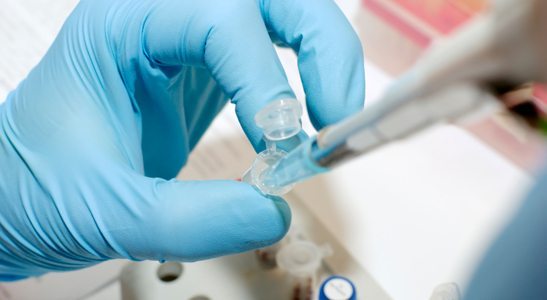In partnership with the University of Luxembourg, scientists at the University of Arizona College of Medicine – Phoenix have developed a new instrument for studying a biological model of the human gastrointestinal tract that mimics the actual conditions and processes that occur within the intestine.
The research, published earlier this month in Nature Communications, will allow scientists to see how cells from individuals respond to certain drugs, allowing them to formulate personalized drug therapies. With the organ-on-a-chip technology, researchers can analyze the interactions between human cells and the microbial ecosystems of the gut, predicting their effects on health or disease onset, and study the action of probiotics, nutritional compounds or drugs.
The “Human-Microbial Cross-Talk” model, or HuMiX, was designed and prototyped at the College of Medicine’s Center for Applied NanoBioscience and Medicine, led by Director and Professor Frederic Zenhausern, PhD, MBA. UA researchers worked with scientists from the University of Luxembourg and the Luxembourg Center for Systems Biomedicine, which led the development of the biological implications for the model.
HuMiX allows researchers to determine interactions with several drugs at a time and could replace the animal model, Zenhausern said. “The mice model is not a good representation of the complex human gut biology,” he said.
Zenhausern said the UA team is designing biological systems for studying the impact of the gut-brain axis which may be involved in cognition, but also in Alzheimer’s or Parkinson’s diseases.
The Center for Applied NanoBioscience and Medicine’s staff of a dozen scientists finds applications and creates devices for a new generation of biological tools and sensors based on nano and microscale technologies.
With the HuMiX model, Paul Wilmes, PhD, senior author of the research and principal investigator at the Luxembourg Center, said scientists can actually look at responses of human cells in relation to specific microbiome compositions. “It’s a model that is much more relevant from a human disease and health perspective,” he said.
For example, bacterial species can be introduced into the artificial gut model and scientists can study whether the organisms trigger or slow down inflammation or introduce immune cells and neurons together with the bacteria, Wilmes said. “We can also analyze how probiotics, dietary compounds or drugs affect human physiology,” he said.
The core of the technology is a spiral-shaped nanofabricated chamber that has a thin, permeable polymer membrane separating bacteria and nutrients from human gastrointestinal cells while still allowing communication between the layers. The practical implications allow scientists to look at how different diets along with different microbiome compositions might affect human cell physiology.
“We can put in (to the model), cells from individuals and see how those cells respond to certain drugs and start really understanding how we might formulate drug therapies in a very personalized way,” Wilmes said.
Zenhausern said the development of tools for better characterizing the functional role of the human microbiome in human health has the potential to aid in the discovery of new treatments for obesity, inflammatory bowel disease, diabetes, cancer and neurodegenerative diseases. The technology also could be a valuable tool for better understanding the role of microbials in the physicial performance and cognitive function of soldiers in war, athletes or other professionals under high-stress activities.




